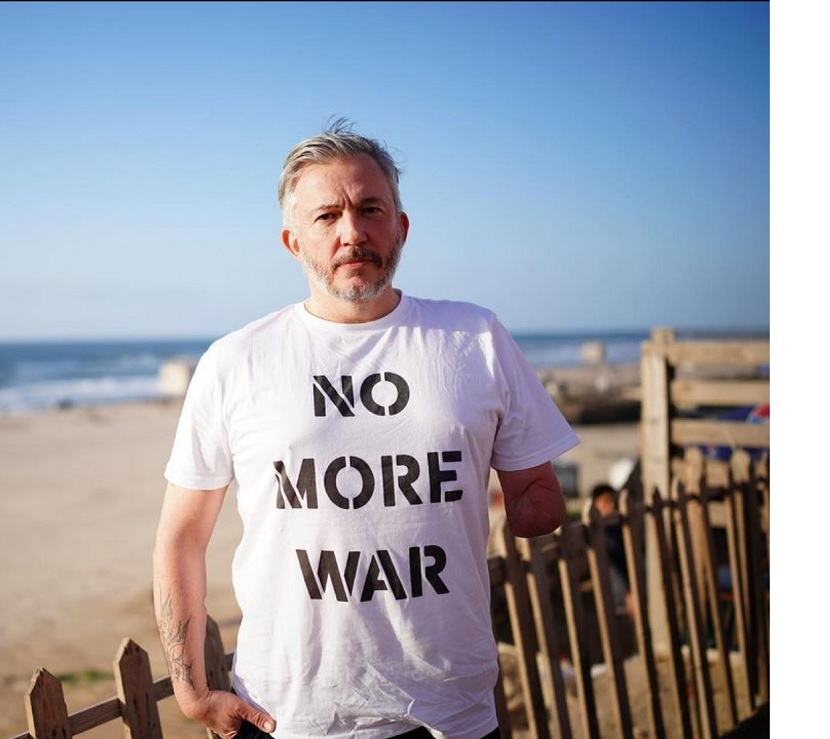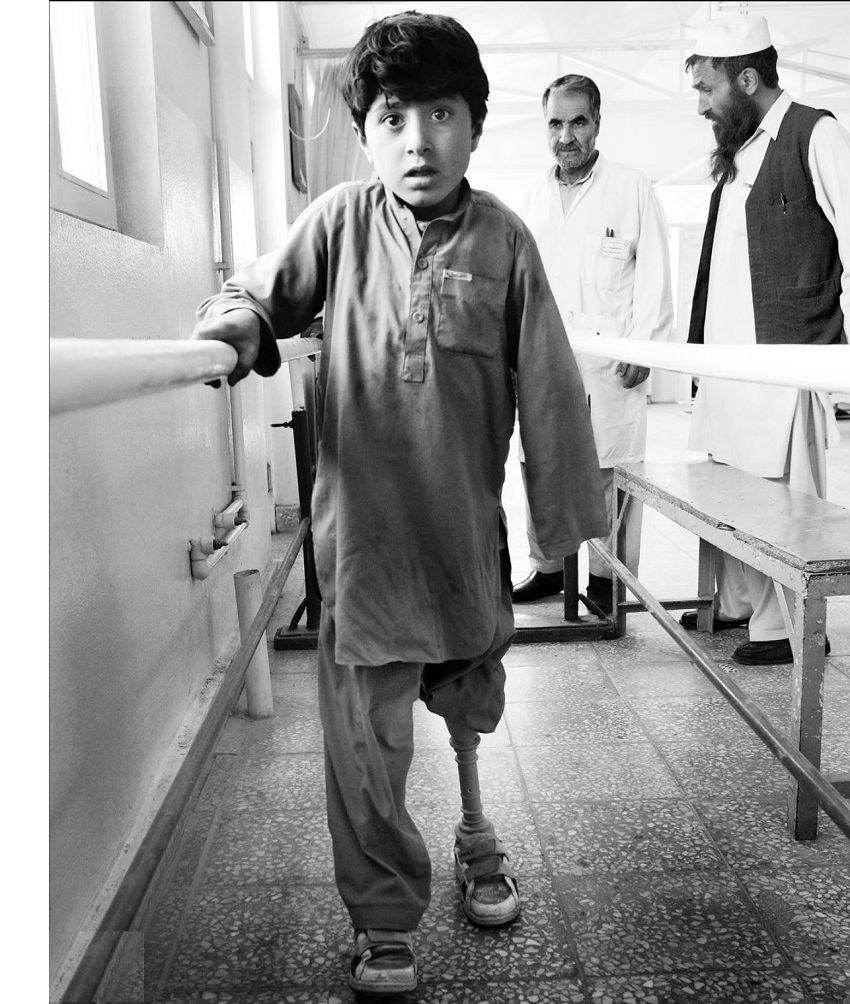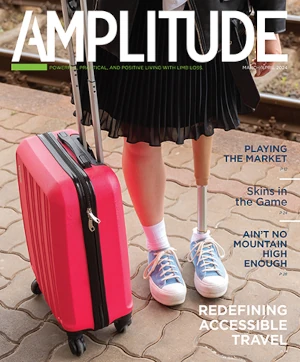
Celebrity Cruises’ All-Inclusive Photo Project, featured in this month’s print issue of Amplitude, isn’t a typical assignment for award-winning lensman Giles Duley. He’s much better known for his documentary photos of war and its impact on people and communities. But he does like good food and good laughs, and if he can discover those pleasures in a bombed-out Syrian village, then he certainly can find them on a cruise ship full of diverse, dynamic people.
But Duley didn’t sign on with AIPP just for the cocktails, posh cabin, and ocean air. The assignment overlaps with his ongoing campaign to open people’s eyes to the basic humanity of people with disabilities. Since losing his left arm and both legs in 2011 while documenting the war in Afghanistan, Duley has sought to broaden the narrow perspective from which he’s so often perceived. “The disability becomes the first thing [people see],” he observes, “and you become the second thing.”
The All-Inclusive Photo Project offered a high-profile opportunity to present a more true-to-life vision. Duley already pursues the same ends through The One-Armed Chef, the travel and food show he hosts on Vice (available to stream on YouTube), and the Legacy of War Foundation, Duley’s international relief agency which funnels aid to civilians impacted by war. And he continues to visit war-ravaged regions (most recently Ukraine) to document the scarring and healing, the pain and the love, that warfare leaves in its wake.
As one of the few amputees who’s also a practicing photojournalist, Duley has a unique perspective on disability representation and storytelling. Last month he spoke with Amplitude about his work and the broader trends affecting how limb difference is portrayed and perceived. You can see some of his portraits at gilesduley.com, and follow him on Instagram @gilesduley and @one_armed_chef. Our conversation is edited for length.
How did you get connected with the All-Inclusive Photo Project,and why is it a good fit for you?
I used to be a fashion photographer, but I very rarely get involved in anything commercial these days—especially when it’s around the idea of representing disability or marginalized communities. Normally what happens is that it’s tokenism, both in the sense of who’s in front of the camera and who’s behind it as a photographer. Pretty much every commission I’ve been asked to do since I’ve gotten injured involves photographing somebody who’s got a disability, and I try to skirt away from that.
My kind of first question of Celebrity Cruises was: How much control would I have over the actual casting? When they agreed that I would have control over the casting, that’s when I said I’d be interested. Most people are very smart these days to advertising, and advertising has started moving into advertorials and social media, trying to fool us into thinking it’s not advertising. It’s not hit-us-in-the-face advertising, but something that more subtly seduces. And whenever that involves disability, it usually feels like a group of people who’ve obviously been thrown together to check boxes. I wanted to get a cast together that looks like a bunch of friends. It was about characters as opposed to categories of disability.
That sounds like a sidestep, but it actually is how I work when I go into the field as a documentary photographer. I’ll often be traveling with an NGO, and they will give me a list of people they think I should meet. I tend to rip those lists up. I call them “injury lists”—there’s someone with a facial injury, someone in a wheelchair, someone missing a limb. A lot of these agencies think people need to see the facial injury or the disabled body, and I said: Let’s change the narrative. So I would rip their list up, and I’d ask the local team: When you visit families, who’s the kid that is always a nightmare? Who’s the family where the food’s always really amazing? Who’s the family that really keeps you awake at night, because you wish you could do more for them? And inevitably, that approach literally gives them everything on the list they’d give me in the first place.
It was the same with the casting [for the All-Inclusive Photo Project]. It wasn’t just a case of saying, “We need somebody who is in a wheelchair, we need somebody who has one leg, we need one gay couple.” It was about finding people who had interesting character. So we have a ballroom dancer who happens to be in a wheelchair, an athlete who’s represented her country in the Paralympics, a gay couple who are both strong, powerful activists within their community. Each person had this characteristic of strength first, and their disability, their color, their sexual orientation is part of that story. I knew if I got these people together, interesting things would happen, and the images would look more like a group of friends than a collection of injuries. In a sense it came down to finding the people who are gonna be the most fun to be stuck with for a week on a cruise ship. That was the dynamic.

Media and entertainment outlets seem to force people with disabilities into prefabricated storylines. Does it seem to you that we’re inching closer to an era where that’s changing, and people’s actual stories are allowed to emerge?
I have a sort of jokey rule: If you’re representing somebody with disability, the disability should come after your name, not before it. When I resumed working after my injuries, the headline would say: “Disabled photographer documents Syrian refugees,” which means the first thing to know about me is that I have a disability. If that information comes further down in the article, that’s fine—it’s part of my story, and maybe it helps other people relate. But so often in a marginalized community, that word—whether “Black,” or “gay,” or “disabled”—comes first, before your name. And that should never happen. It should always come after your name. I call that “the comma rule”: The disability always has to come after the comma. Your name, comma, and then your disability.
It’s a small thing, but it changes the way people think. For example, I was taking photographs of two brothers in Afghanistan who had lost their legs. I took portraits of their faces, and my editor said, “But we can’t see they’ve lost their legs!” I said, “Just have a look in their eyes. Look at the portraits.” Those are the kinds of battles you have. If I’m going to photograph a person who has an injury or has scarring, I don’t go looking for it. If it shows up organically, it shows up. You can’t force it.
When people come to do portraits of me for a magazine article, I feel sorry for the photographers, because I know they’ve been told by their editor, “We need to see he’s got no legs.” So they bring out a wide-angle lens, and I’m like, “Do you normally use that lens when you’re doing a portrait?” They say no, and I say, “Why are you using it today then?” This is the problem. The disability, the sexual orientation, whatever it is, becomes the first thing. Who you are becomes the second thing.
We still haven’t reached a point where the person comes first. And until we get away from [putting the disability first], we haven’t really reached parity. One of the reasons we haven’t reached that is that we are often the story, but rarely the storyteller. I’ve worked in the magazine industry since I was 18 or 19, and I struggle to think of anybody I’ve seen with a disability and at the magazines I’ve worked for—unless maybe they are on the disability desk. Until you correct that, you’re always going to have this narrative that is written by somebody who doesn’t fully understand and still sees marginalized communities as a novelty.
Are there photographers out there who are doing things that you admire in terms of changing this dynamic?
There’s a guy called Dexter McLean. He’s had cerebral palsy since childhood, and he takes amazingly powerful images. He’s also Black. He came to one of my exhibitions early on, as he was starting his career, and I remember seeing his photographs and thinking they were really powerful. I’d never seen anything from that perspective. He had been given no opportunities to work, but his work is incredibly powerful and important. So we have just got to get through this so it becomes normal. We’ve just got to reach a point where it’s not a big deal. The All-Inclusive Photo, the One-Armed Chef, they’re all things that just slowly bring about change.
I’m glad you mentioned the One-Armed Chef as another way of working toward that point. Food is so relatable, so humanizing, so universal, that by leading with that subject you’re not putting the focus on how people are different; you’re focusing on something that makes us all the same. Is that a conscious objective?
Yeah, absolutely. As a documentary photographer, I use food as a way to connect with people. I always said you take better photographs of a person if you’ve eaten with them first. So I was trying to have meals with families before I document them.
And tied into that was the fact that [after my injury] I would go to a restaurant and order food, and it would be served to me cut up into pieces. They’re trying to be helpful, but I would feel my meal was ruined, and I would feel infantile in front of my date. It was embarrassing. I was in a famous steak restaurant in London a couple of days ago, and the waiter said, “Should we cut your steak up for you?” I said, “Honestly, if there’s a problem with me cutting the steak, the problem is with your steak, not with me.”
That’s how the One-Armed Chef came about. I wanted to show people that the greatest disability I have is in the eyes of others—in their opinions on what I can or can’t do. That’s where my biggest disability lies. I wanted to make a show about going to great restaurants, hanging out with great people, and having an amazing experience. I love the fact that, in the comments at the bottom the show, people will write: “I didn’t realize until halfway through the show that you only one arm and no legs.” Which is interesting, because we say it right up front: It’s called “The One-Armed Chef.” But we don’t want to be defined by that. I’m out there, I’m enjoying life, and I’m telling stories about community and food. I don’t have to explain [my disability]. I don’t have to justify myself for being on TV. It’s just that’s my backstory. But we all have backstories.
How do you reflect these values through the Legacy of War Foundation?
I don’t believe in showing marginalized communities in conflict zones as victims. Yes, they may have different challenges; yes, at times they are left behind in a crisis. But let’s not portray them as victims. Let’s see them as the people they are, and then support them to rebuild their lives. Let’s give them the opportunity we would hope to have.
As a triple amputee myself, I know how painful it is. It’s a nightmare. I don’t want anyone else to go through it. But when anybody with a disability is seen purely as a source of either sympathy or resilience, or when anyone affected by war is seen purely as a victim, we’re perpetuating stereotypes. I will say I’m not a war photographer; I document love. I’ve been in situations where people are very badly injured, they’ve lost their homes, they’ve been displaced by war. But in that family, you find so much love and laughter that you actually think: “I wish I had a family like that. I wish that was my life.”
I think for most marginalized communities, we just want to be seen on a level playing field. Until we reach that point, we still need to improve.




